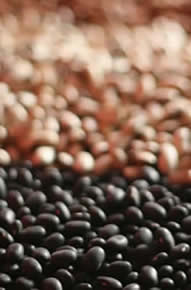Seed Saving Techniques
Latin Alert: This section may involve a bit more science and detail than many of you were bargaining for. But for those who want to save seeds for genetic purity, this information will be necessary.
Before I get into it, I’ll direct you to my source. Perhaps the penultimate guide to saving seeds is called Seed To Seed, by Suzanne Ashworth and Kent Whealy. And it’s way more scientific than I’ll be able to give you, for anyone craving a whole lot of Latin.
Saving seed isn’t always a simple task. Depending on the crop, the plant varieties must be separated, sometimes by miles. Since most of us don’t live on rolling farms, another way to prevent cross-pollination is to cage and hand-pollinate the plants. I’ll gradually add information about these options, as well as saving the seed of different vegetables. We’ll begin with beans, since that’s what this site is about, and because happily, they aren’t too difficult.
Beans
Technically (and Latin-ly), all of the beans featured on this site are part of the Leguminosea family. However, this is a large family, containing common beans, as well as teparies, garbanzos, lentils, peas, jicama (I had no idea!) and peanuts. So as we go, I’ll break this down into Genus and species. Most of them on this site fall into the Phaseolus genus. 
Common Beans (Phaseolus vulgaris)
Common beans, like cannelini, Hutterite soup beans, and the Rio Zape purple beans are known to the botanical community as Phaseolus vulgaris (vulgar as in plebeian, not as in needs-mouth-washed-out, I’m sure!)
According to Ashworth in Seed to Seed, bean flowers are “perfect and self-pollinating”. For this reason, they need less separation than other crops. Ashworth suggests that to save common bean seed, you must refrain from growing them side by side. She also suggests never growing two white-seeded varieties near each other because then it would be impossible to determine if crossing had occurred.
